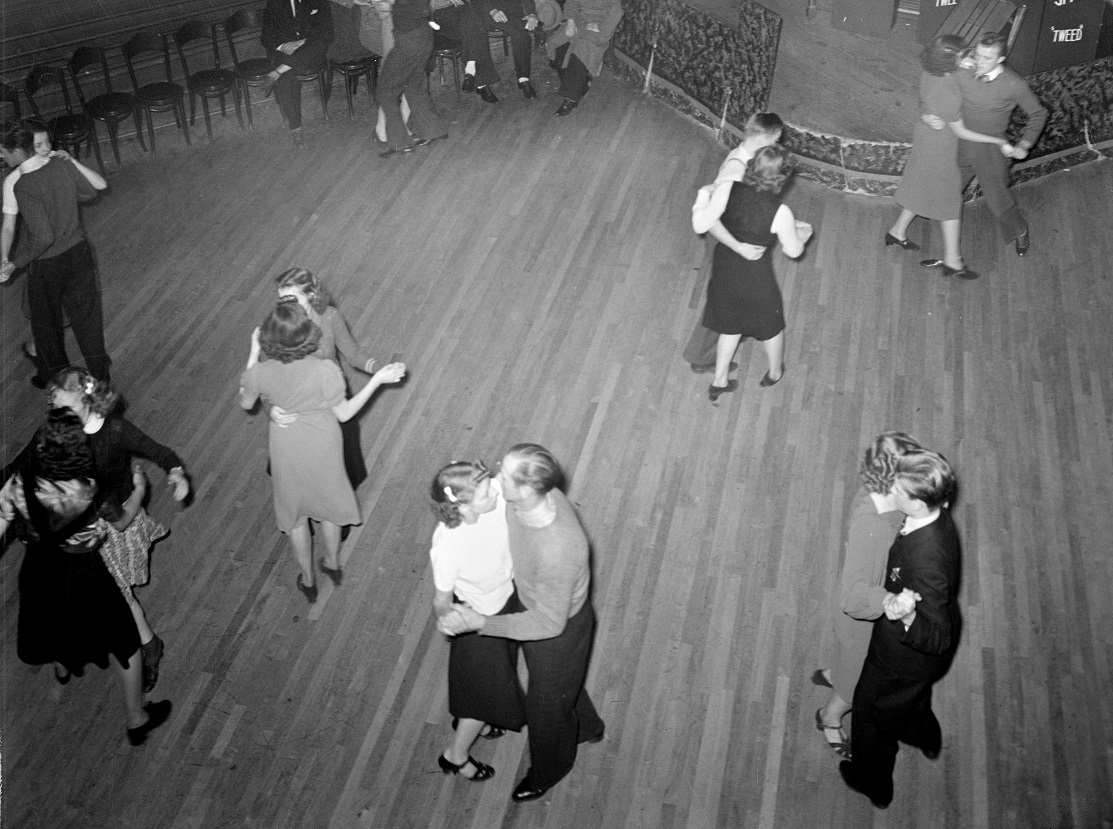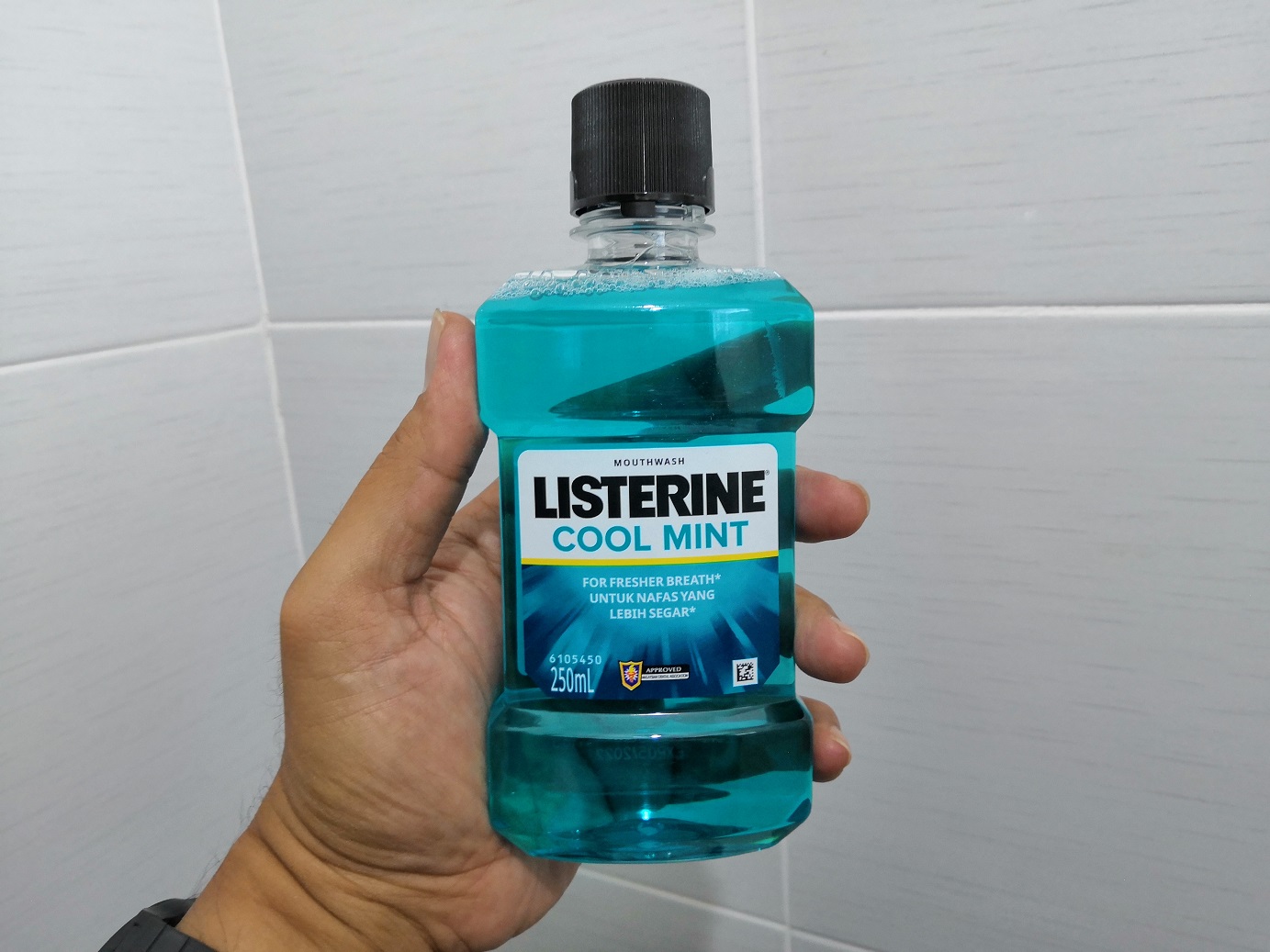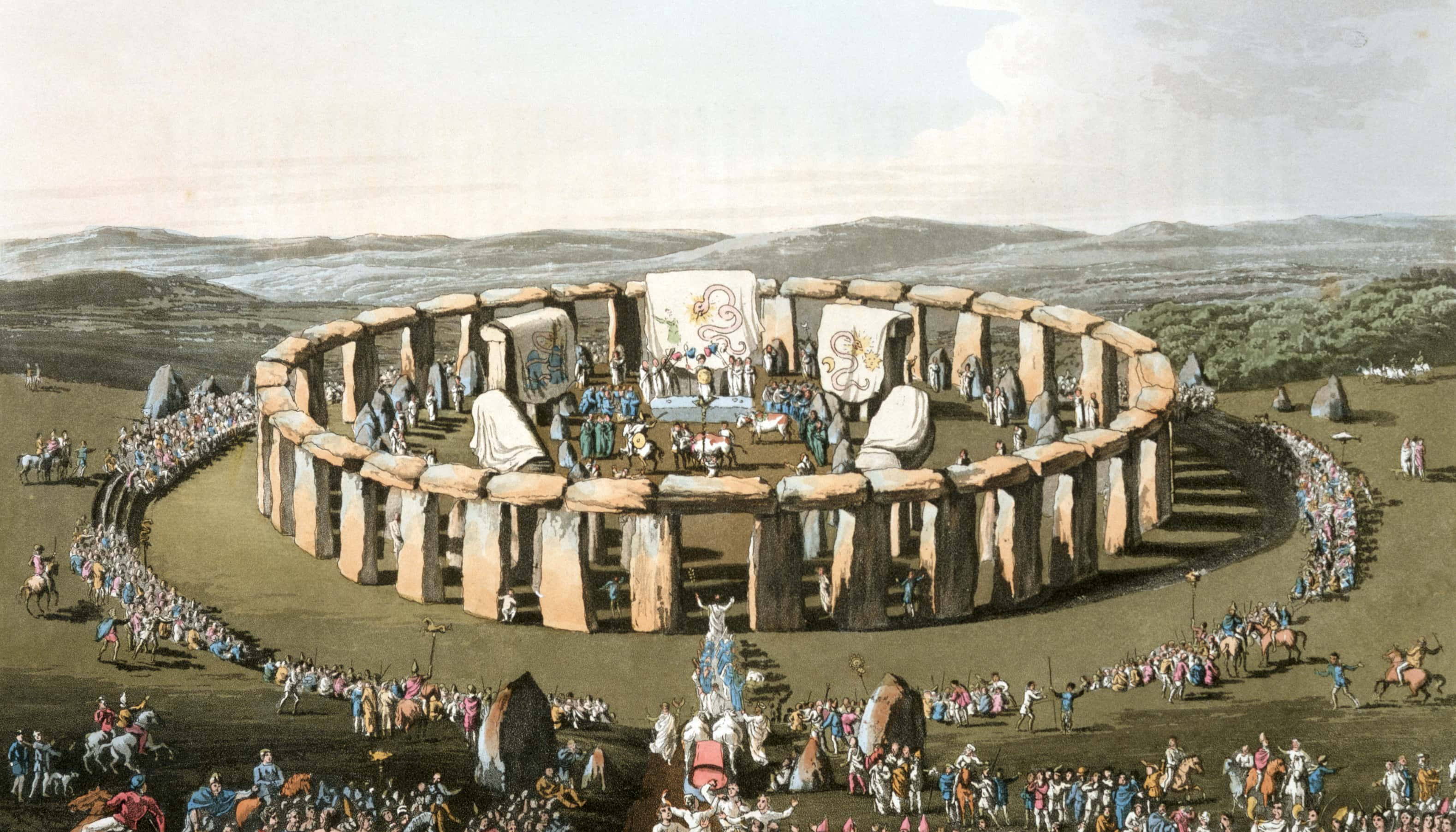Everything Has A History
There are some parts of our daily lives that we've never stopped to wonder about. However, some of the most harmless products, practices, and objects have the darkest backstories.

The CPR Doll
It might be surprising to learn that the CPR Doll, also known as Resuscitation Annie or Rescue Annie, has a dark backstory. After all, Rescue Annie's overall purpose seems so positive—to help people learn how to perform CPR.
The CPR Doll
If you take a close look at Rescue Annie's face, you'll realize that her features are quite distinctive—and for good reason. Her likeness was based on a real person. Unfortunately, the model that inspired her met a tragic end.
The CPR Doll
You see, Rescue Annie's face is actually the face of an unidentified woman who allegedly drowned in the River Seine. Known as L'Inconnue de la Seine, meaning "the unknown woman of Seine," this unfortunate victim met her terrible fate in the late 19th century.
The CPR Doll
It was the toymaker Åsmund S Lærdal who immortalized this anonymous woman by using her likeness for the resuscitation mannequin. He believed that the men learning how to perform CPR would be averse to locking lips with a male model, and therefore used a woman's face instead.
Graham Crackers
In the early 19th century, graham crackers became the answer to a shocking moral dilemma: The younger generation's carnal desires and urges.
 Leslie Seaton, CC-BY-SA-2.0, Wikimedia Commons
Leslie Seaton, CC-BY-SA-2.0, Wikimedia Commons
Graham Crackers
Reverend Sylvester Graham thought that a preoccupation with sensual pleasure was a result of a terrible diet. After all, his own diet was quite rigid and bland. Graham was a vegetarian who'd turned his back on spices, tobacco, sugar, and caffeine—or in other words—flavor.
 Library of Congress, Wikimedia Commons
Library of Congress, Wikimedia Commons
Graham Crackers
To save the youths from their dangerous passions, Graham invented the most boring cracker imaginable. It wasn't like the graham cracker we know today. Instead, it had no flavor at all, which was supposed to help suppress emotions.
 Internet Archive Book Images, Wikimedia Commons
Internet Archive Book Images, Wikimedia Commons
Graham Crackers
Unsurprisingly, Graham's cracker was not the cure he'd hoped it would be. Over time, the recipe became so warped (and delicious)—it would probably enrage the reverend if he were still alive today.
Candy Land
Candy Land is a beloved board game that ignites the imagination with its delicious destinations. But as innocent as it seems, the game actually has a tragic backstory.
Candy Land
In 1948, a retired schoolteacher named Eleanor Abbott received a chilling diagnosis: She had polio. Sadly, at the time, the vaccine for polio wasn't discovered yet. Abbott faced a scary future as the disease could cause paralysis or even be fatal.
Candy Land
During the polio epidemic, children were the most affected. That's how Abbott found herself in an isolated ward in the company of many ill children. It was a trying time, and all of the patients needed something to lift their spirits and take their minds off of their sad situations. That's when Abbott came up with a brilliant idea.
Candy Land
Abbott came up with the idea for a board game and made a rough draft of what would eventually become Candy Land. The sick kids absolutely adored it. Down the road, Abbott presented her product to Milton Bradley, the game company. And the rest is history.
 digitalreflections, Shutterstock
digitalreflections, Shutterstock
The Modern Speculum
It was a man who invented the modern speculum now used in gynecology practices. His name was J Marion Sims, but sadly, he had a deeply disturbing history.
 Unknown author, Wikimedia Commons
Unknown author, Wikimedia Commons
The Modern Speculum
You see, Sims was a plantation doctor who conducted some seriously unethical experiments. From 1845 to 1849, he operated on 12 enslaved women. The horrific part? He neglected to give them any anesthesia.
The Modern Speculum
In the midst of Sims' awful practices, he invented a tool that aided him in a fistula repair—the duckbill speculum. As a result, he somehow earned the important title: "father of modern genecology".
 Billy Hathorn, CC BY-SA 3.0, Wikimedia Commons
Billy Hathorn, CC BY-SA 3.0, Wikimedia Commons
Treadmills
If running on the treadmill feels like torture, then you already have insight into this exercise machine's chilling origin story.
Treadmills
Back in 1818, an engineer named Sir William Cubitt introduced the "tread wheel," which was made especially for prison inmates. They would walk on the tread wheel to produce kinetic energy, which would operate grain mills and water pumps. But that's not all.
 Henry Mayhew & John Binny, Wikimedia Commons
Henry Mayhew & John Binny, Wikimedia Commons
Treadmills
You see, many of the inmates had to walk on the tread wheel for as long as eight hours. Due to their awful diets, many of them were too weak to walk for so long. As a result, many fell and injured themselves. In a way, the treadmill became a form of brutal punishment.
 Unknown Author, Wikimedia Commons
Unknown Author, Wikimedia Commons
Dance Marathons
Dance marathons seem like a straightforward and entertaining way of raising money for certain causes. For Instance, they've been hosted by the Miracle Network Dance Marathon and the University of Iowa.
However, they have a shockingly dark history.
Dance Marathons
Dance marathons are exactly what they sound like: Participants dance as long as possible, taking little to no breaks. This, of course, draws audiences, and money is often raised. But it wasn't so long ago that these dance marathons reeked of sad desperation.
Dance Marathons
Dance marathons were big entertainment during the Great Depression. Sadly, many of the dancers were struggling financially, hoping to get their hands on the cash prize. This meant many were pushing their bodies too far.
 Everett Collection, Shutterstock
Everett Collection, Shutterstock
Dance Marathons
The dance marathons could be quite torturous. The hours were long and grating. For instance, one dancer even set a record by dancing for 82 hours. However, there was more at risk than the aches, pains, and exhaustion of such a sport.
 Everett Collection, Shutterstock
Everett Collection, Shutterstock
Dance Marathons
One dance marathon ended in tragedy. A man named Homer Morehouse danced past the point of no return. After 87 hours, his heart gave out and he passed away.
Mini Golf
Mini golf is a fun way to spend the evening—a relaxing, simpler version of a full-blown golf game. But why was it even created in the first place? Well, there are a few origin stories—but one is a little unsettling.
Mini Golf
According to one story, mini golf dates back to 1867, starting in St Andrews, Scotland. An 18-hole course was created just for female golfers. However, there was a catch.
Mini Golf
As "proper" ladies, the women were only allowed to putt as it was considered unladylike for them to swing their clubs higher than their shoulders.
Trick-Or-Treating
Trick-or-treating is a fun Halloween tradition, right? Well, it is today—but rewind to pre-Christian Europe, and it had a much darker premise.
Trick-Or-Treating
Originally, Halloween was the Celtic festival of Samhain. During this festival, bonfires would be lit and sacrifices made in recognition of the dead. But that wasn't all.
Trick-Or-Treating
Ancient Celts put on costumes too, but not for fun. They'd wear animal skins to scare off spirits, or put food out to keep them at bay.
 Kabuto 7, CC-BY-SA-4.0, Wikimedia Commons
Kabuto 7, CC-BY-SA-4.0, Wikimedia Commons
Trick-Or-Treating
When Christianity took hold, these ancient traditions evolved into something called "guising". Folks would go door to door as beggars, asking for money or food. In exchange, they'd vow to pray for souls that had already passed on.
Trick-Or-Treating
It wasn't until the 1930s, that the "trick-or-treating" we know today came to be. In fact, it didn't really become a huge practice until the 1950s, as this was when family-friendly suburbia became very popular.
 U.S. Army Garrison Japan, Flickr
U.S. Army Garrison Japan, Flickr
Cooties
"Cooties" have always been a common term used on the playground or amongst children. It's all in good fun when a little girl screeches that the boy next to her has given her cooties. To them, cooties are all imaginary—but in reality, they have a devastating origin story.
Cooties
Once you realize that cooties have their roots in WWI, they become a lot less fun. Soldiers suffered terribly in the trenches. In addition to the mental anguish, weather conditions, and injuries, they also had to endure body lice—AKA cooties.
Cooties
The lice could cover the soldiers' bodies in nasty bites, but they were also a vehicle for spreading diseases like typhus. Thousands of men succumbed to this disease during the war—and the cooties shouldered much of the blame.
The Barber's Pole
Have you ever wondered why barber's poles have such distinctive colors? In Europe, they are usually red and white, but in America, they're red, white, and blue.
The Barber's Pole
Turns out, these poles have a rich history. Once upon a time, you didn't just visit your barber for a haircut—sometimes you even went to him for medical help, such as bloodletting.
The Barber's Pole
In the Middle Ages, many believed that bloodletting was an excellent remedy for several illnesses—everything from a cold to the plague. But this was not a fun process at all.
The Barber's Pole
You see, bloodletting was exactly as it sounded—opening up a vein and letting the blood flow. Originally, monks practiced this treatment, but in 1163, Pope Alexander III forbade clergymen from doing it. This is when barbers stepped in.
 Spinello Aretino, Wikimedia Commons
Spinello Aretino, Wikimedia Commons
The Barber's Pole
Barbers began taking blades to more than just hair. They were barber-surgeons, who even took on additional medical responsibilities like dental work and setting bones. Even Ambroise Pare—destined to become the father of modern surgery—was a barber-surgeon first.
 William Holl, Wikimedia Commons
William Holl, Wikimedia Commons
The Barber's Pole
Therefore, the red and white colors found in a barber's pole reflect two things: The white illustrates bandages, while the red represents blood. Even the pole itself plays a symbolic role as a patient would hold a stick tightly in order to make their veins easier to find.
The Barber's Pole
The American barber's pole also includes the color blue, which some have speculated is a representation of the vein itself. Others have theorized it was simply an acknowledgment of the American flag.
Oneida Limited
Oneida Limited is a pretty familiar brand to most people as it is one of the biggest manufacturers of cutlery and tableware. In fact, in North America, it is the number one supplier of these products in the foodservice industry. However, few know its strange backstory.
 Mark Miller, CC BY-SA 3.0, Wikimedia Commons
Mark Miller, CC BY-SA 3.0, Wikimedia Commons
Oneida Limited
You see, the company's roots grew directly out of the Oneida Community. This was a perfectionist religious communal society that began in the mid-19th century in Oneida, New York—and it had some pretty bizarre beliefs.
 Moulton & Dopp, Wikimedia Commons
Moulton & Dopp, Wikimedia Commons
Oneida Limited
Initially led by John Humphrey Noyes and supported by his followers, this unique society upheld a belief known as perfectionism. They claimed that they could be sinless on earth—or perfect. This stemmed from their belief in Jesus's return in AD 70. But that wasn't all.
 Epousesquecido, Wikimedia Commons
Epousesquecido, Wikimedia Commons
Oneida Limited
In addition to perfectionism, the Oneida Community also believed that everyone shared their property and possessions—AKA communalism. Other aspects of the society included group marriage and mutual criticism.
Oneida Limited
However, in 1881, the Oneida Community came to an end, becoming the joint-stock company that eventually evolved into the Oneida Limited company—a manufacturer recognized around the world.
 Ranger & Austen, Wikimedia commons
Ranger & Austen, Wikimedia commons
Fanta
Fanta is a staple soda for many people, but it was initially produced during one of the most turbulent moments in history: WWII.
Fanta
During WWII, Coca-Cola syrup couldn't be imported to Germany. After the United States entered the war, Coca-Cola headquarters no longer had access to the German Plant. Therefore, the head of Coca-Cola Deutschland came up with a new idea.
 SKopp, CC BY 4.0, Wikimedia Commons
SKopp, CC BY 4.0, Wikimedia Commons
Fanta
The head of Coca-Cola Deutschland, Mac Keith, decided to come up with an alternative soda for the German people—one that could actually be made with ingredients on hand, such as sugar beet. The name of this product? Fanta.
 Brett Jordan, CC BY 2.0, Wikimedia Commons
Brett Jordan, CC BY 2.0, Wikimedia Commons
Fanta
Fanta was extremely popular in Germany during WWII, and the company sold 3 million cases in 1943. Consumers, however, didn't always drink it as a sweet treat, but often used it in their cooking due to the low rations of sugar at the time.
 Press Agency photographer, Wikimedia Commons
Press Agency photographer, Wikimedia Commons
Fanta
When the war finally ended, Coca-Cola managed to get their German plant back—and as a consequence, they also got their hands on the Fanta formula.
Baby Bottles
In the Victorian era, baby bottles seemed harmless. It was just another convenient way for women to feed their children—but tragically, the bottles hid a terrible danger.
Baby Bottles
On the surface, these baby bottles seemed like the ultimate savior for Victorian mothers, who likely wrestled with their motherly duties and upkeeping the fashion standards of the time. Though nursing corsets existed, the styles of the day made nursing infants much more difficult than today.
 Elzbieta Sekowska, Shutterstock
Elzbieta Sekowska, Shutterstock
Baby Bottles
These glass or earthenware bottles also came with a detachable rubber mouthpiece that the baby would suckle on. Though marketed as "The Empire" or "Mummies Darling," their design was their ultimate downfall. Extremely dangerous bacteria thrived inside of these bottles, which were hard to keep sanitary.
 Unknown author, Wikimedia Commons
Unknown author, Wikimedia Commons
Baby Bottles
In addition to the design of these bottles, many Victorian women took some bad advice to heart. Isabella Beeton was a trusted source for how a woman should properly maintain their household. However, Beeton made one unfortunate mistake when it came to these infamous baby bottles.
 Maull & Polyblank, Wikimedia Commons
Maull & Polyblank, Wikimedia Commons
Baby Bottles
Beeton claimed that the bottle's rubber attachment only had to be cleaned once every two or three weeks. But this was the worst possible advice she could give. Not cleaning the bottles thoroughly transformed them into breeding grounds for bacteria. The consequences were tragic.

Baby Bottles
When infant mortality rates began to soar, doctors placed the blame on these bottles. Though made aware of the dangers, many parents didn't heed caution and continued to use them. Therefore, is it any wonder that they became known as "Murder Bottles?"
 Paula Modersohn-Becker, Wikimedia Commons
Paula Modersohn-Becker, Wikimedia Commons
Listerine
We all know Listerine as the mouthwash we use to eliminate nasty breath—but few know that it had many more uses in the past.
Listerine
Listerine was used to treat dandruff, body odor, and even diseases like gonorrhea and smallpox. It was also used as a disinfectant to sterilize surgical tools, as well as a cleaning product. So what was Listerine's origin story?
 Everything You Need, Shutterstock
Everything You Need, Shutterstock
Listerine
During the Victorian era, Dr Joseph Lister was a doctor who understood the power of keeping clean. He discovered that his patients' mortality rate dropped when he properly washed his hands and equipment. By using carbolic acid to keep things sterilized, his patients were unlikely to develop sepsis.
However, he was not the one to invent Listerine.
Listerine
It wasn't until 1879 that a chemist named Jordan Wheat Lambert decided to create an antiseptic, and named it after Dr Joseph Lister: Listerine.












































